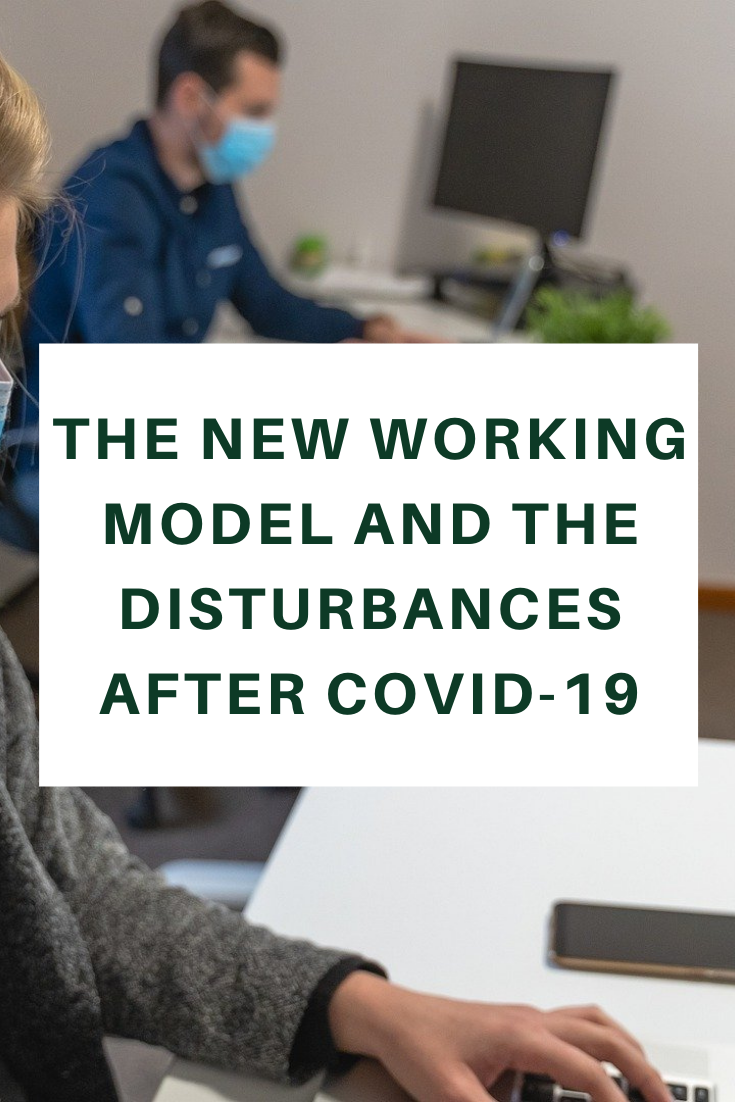The new working model and the disturbances after Covid-19
Distance work, digitization and automation are establishing themselves as the top three trends in the labour market, following the impetus they received from the onset of the Covid-19 pandemic, but at the same time, situations such as anxiety, depression, panic attacks, post-traumatic symptoms stress and other disorders have taken on dimensions, seeking effective treatment in the post-coronavirus era.
The pandemic has shown that 20% – 25% of workers in advanced economies can potentially work remotely three or more days a week. At the same time, digital platforms have grown, and the dynamics of e-commerce have multiplied 2-5 times, while robotic and artificial intelligence technologies are being introduced in business processes, drastically changing the model. In this environment, changes in roles and occupations for the workforce are projected to increase at an average rate of 25% by 2030 and a shift in job demand to new occupations that did not exist before. The impact of the Covid-19 pandemic will continue after the health crisis, reshaping the labour market in the long run and in this environment, which is why both business leaders and policymakers need to develop digital infrastructure and innovate quickly with good practices, benefits and employee support mechanisms.
Business travels
In addition, the widespread use of teleconferencing during the pandemic has brought a new dimension to work, and many companies are expected to replace some business trips after the pandemic. While leisure travel and tourism are likely to recover when the pandemic is over, business travel is not expected to happen. McKinsey estimates that about 20% of business travel will be cut permanently, with all that entails employment in the commercial activities of airports, hotels, restaurants, etc. However, employees are also positive in this new reality. A recent study by the Boston Consulting Group shows that 75% of employees who stay away during the Covid-19 pandemic are as productive in performing their individual tasks as they were before the pandemic. A huge sample of the population would also prefer a mix of home and office work.

Integrating awareness into business
However, the hybrid work model is suitable for dealing with the stress created by the excessive use of the screen in remote work. Incorporating mindfulness into business today is more critical than ever. It can help employees manage stress and be happier and healthier, with an impact on their productivity and efficiency. We know that workplace stress is responsible for many issues, such as absenteeism, chronic illness, burnout, inefficiency, reduced creativity and conflict. All this undermines the morale and health of employees, but also the performance of companies. The pandemic has come to add risks with the countless hours of connection to networking platforms for communication and work needs.
New workplace management tips are helpful as the market changes. E-commerce and other digital processes are growing rapidly, creating a growing demand for distance work. Many consumers have discovered the convenience of e-commerce in the midst of a pandemic, and while the percentage of those who use digital channels for the first time is increasing, and say they will continue.
Other types of digital transactions, such as telemedicine, online banking, and entertainment through streaming platforms, have also grown exponentially. Also, job-offering platforms are pretty common, such as a voice acting agency where someone can explore a wide variety of voice actors at voquent.com which offers job opportunities to young professionals who want to practice this profession from the comfort of their own homes. This new way of working would be said to offer comfort and flexibility while at the same time enabling substantial professional development.
Experience has shown that in times of recession, routine jobs are reduced as companies seek to control their cost base and cope with the pressure on profit margins. Today this is achieved through the adoption of automation technologies and the redesign of processes. Two out of three companies worldwide are investing in automation and artificial intelligence.
*This is a collaborative post

